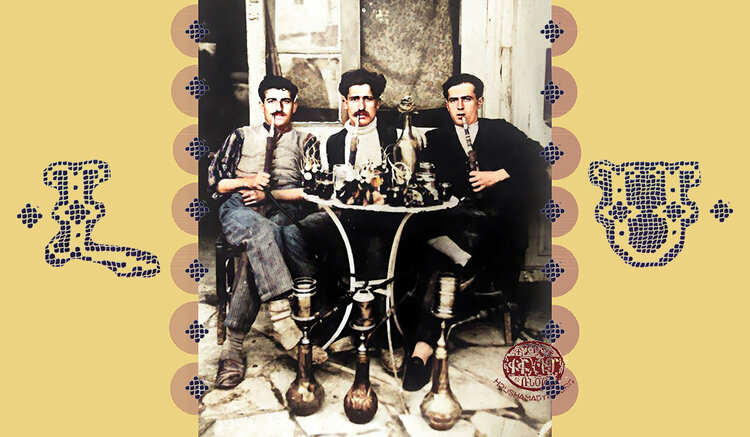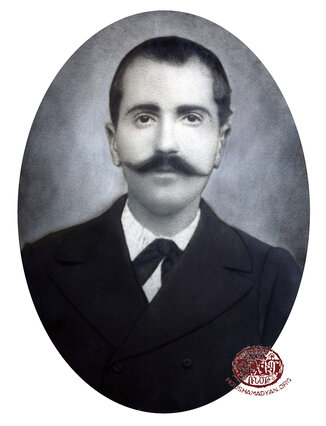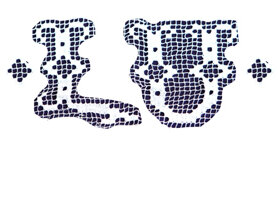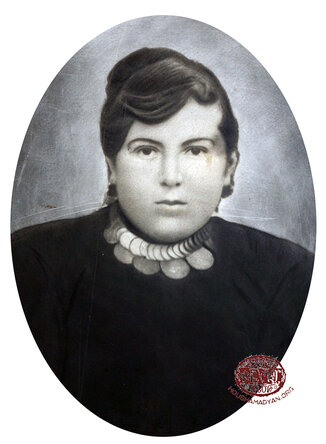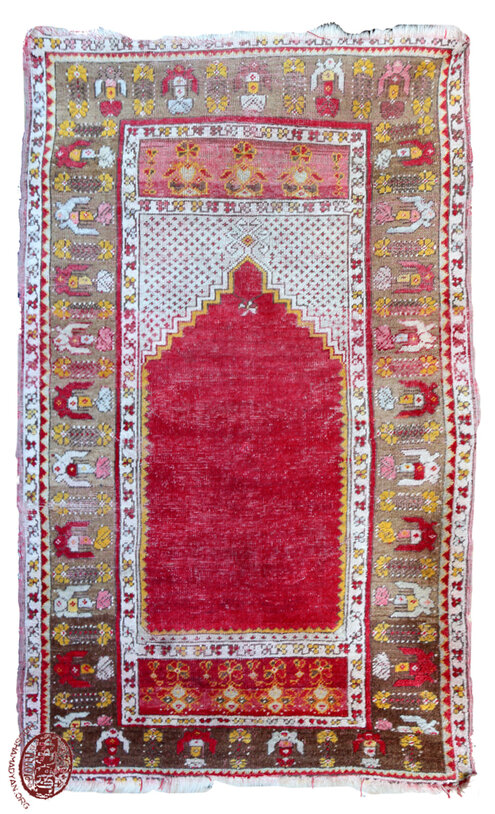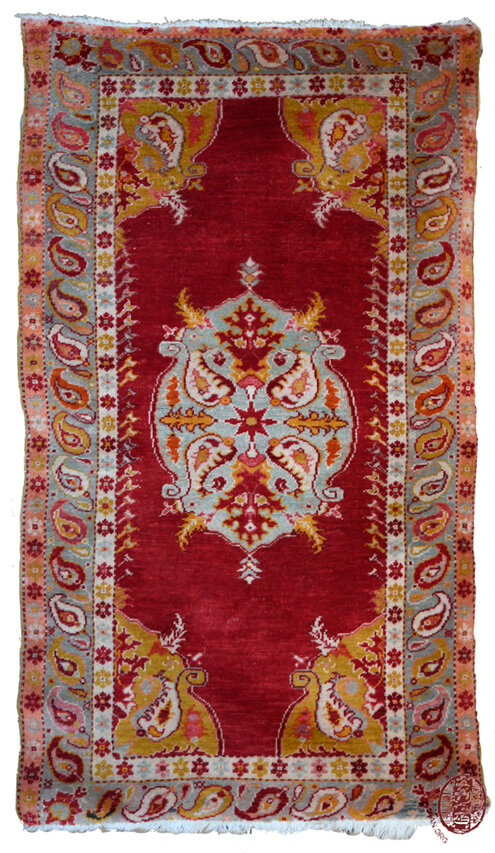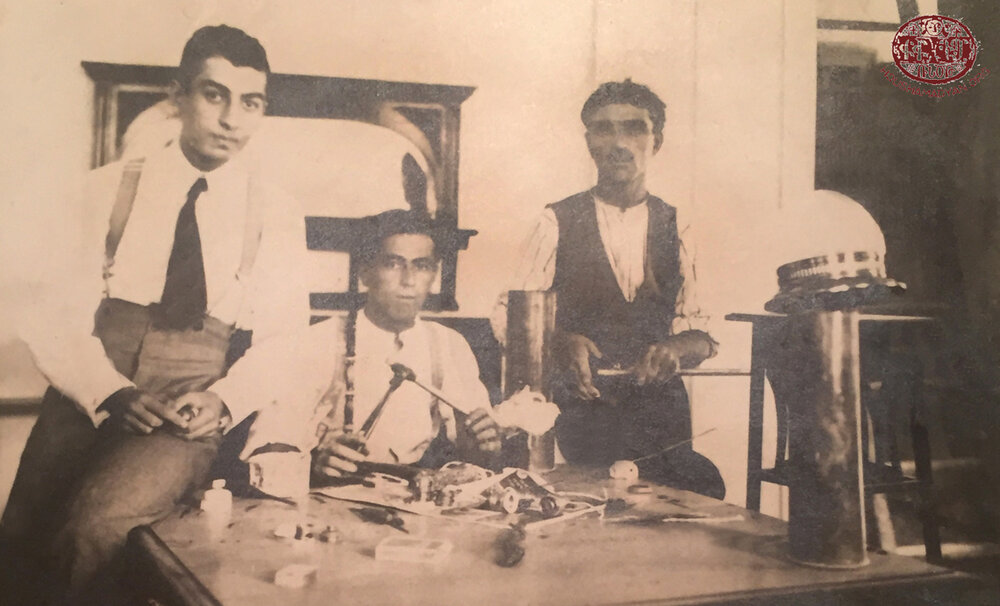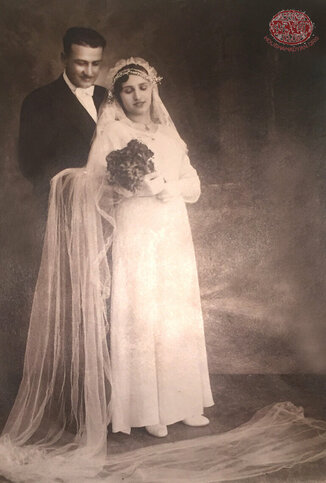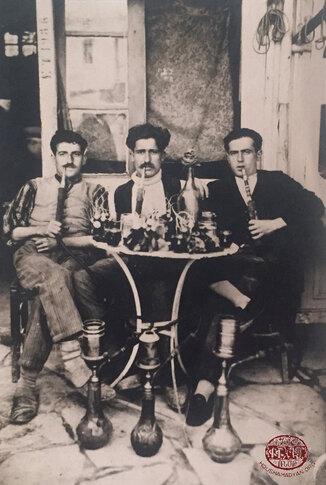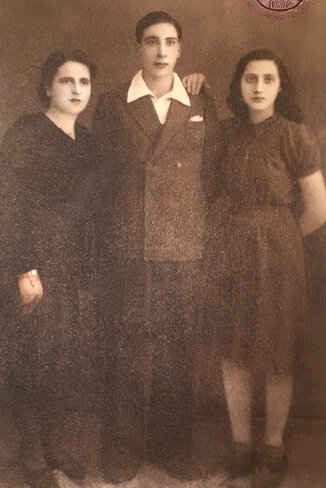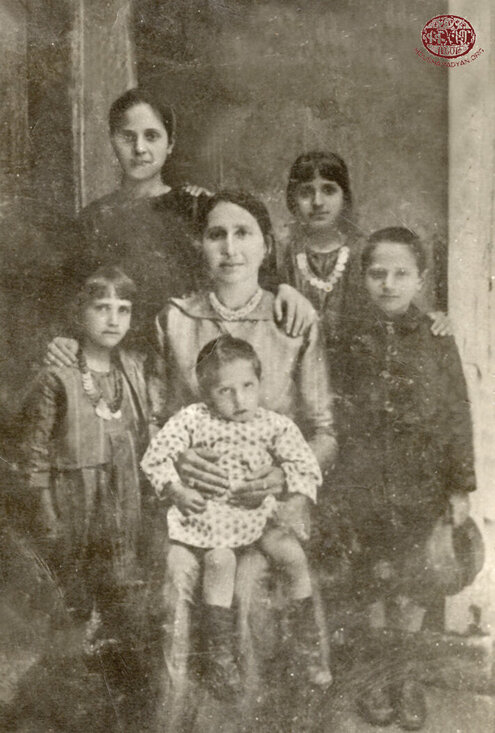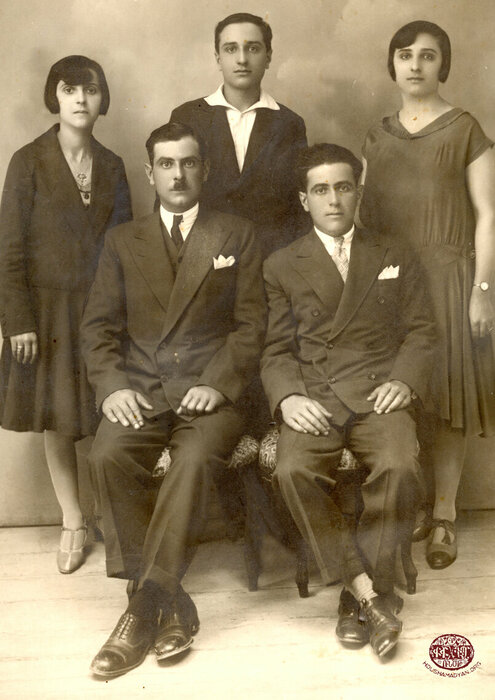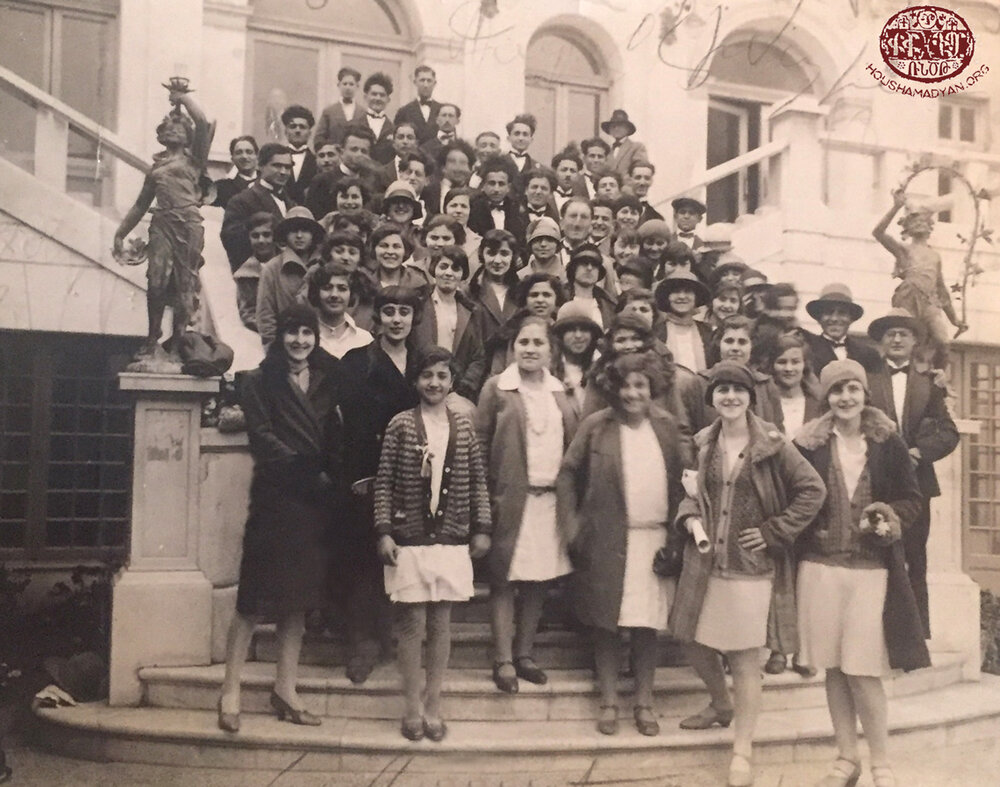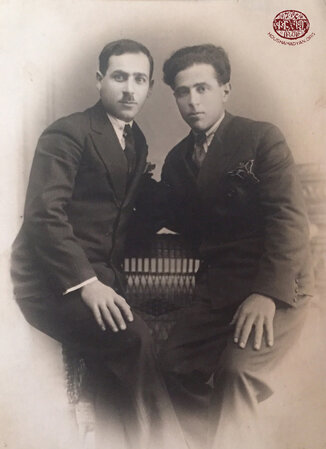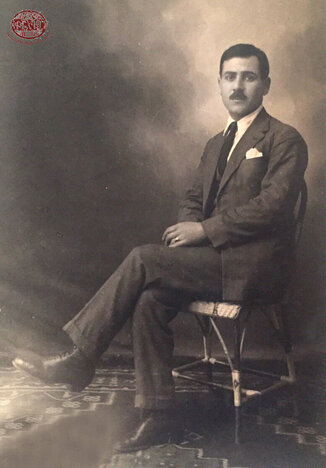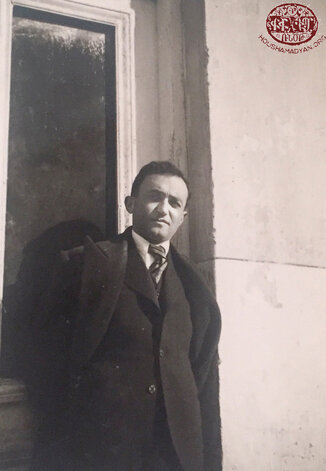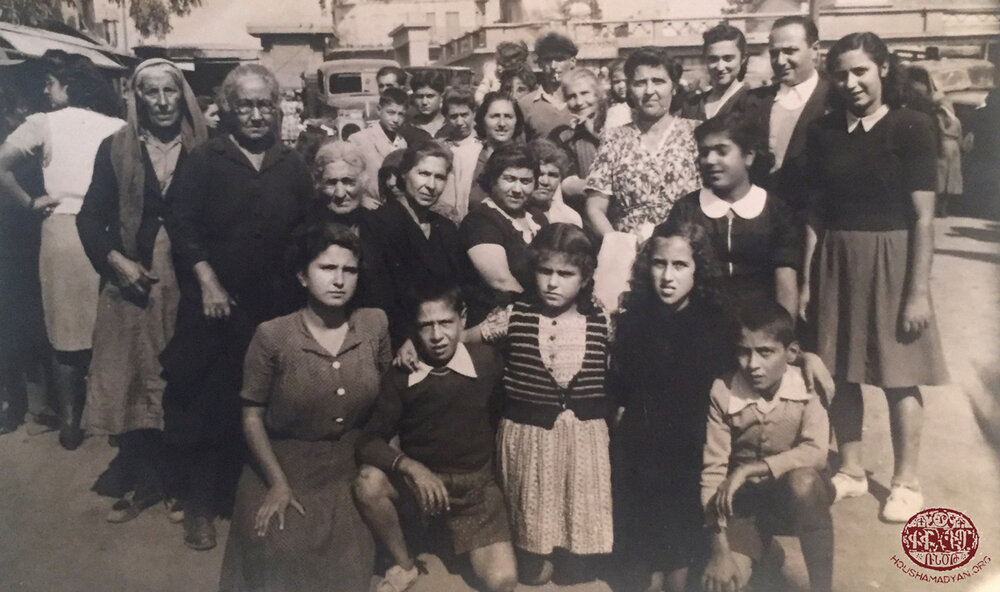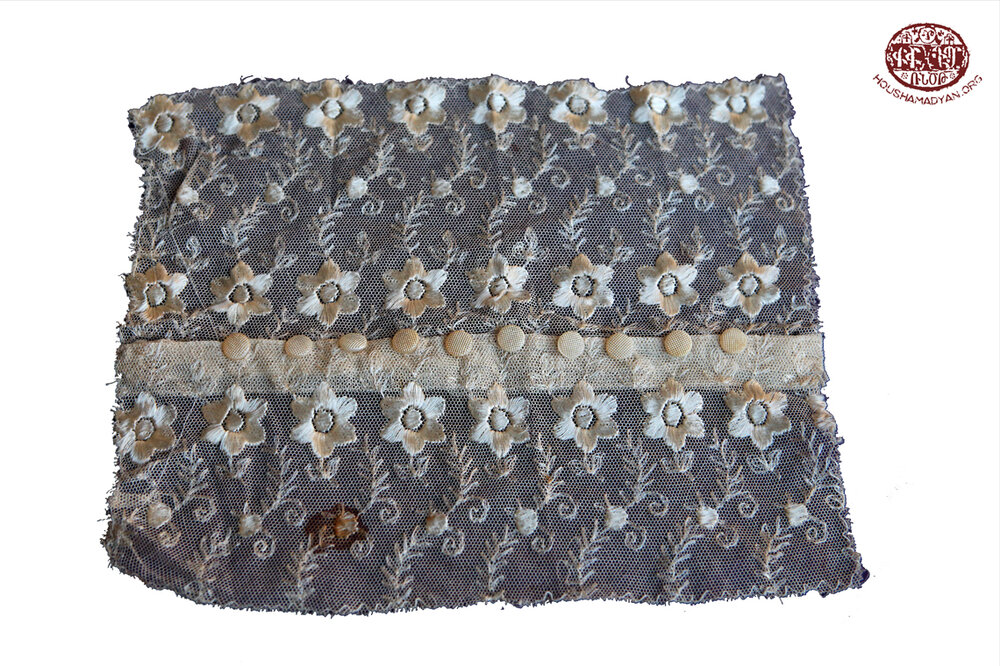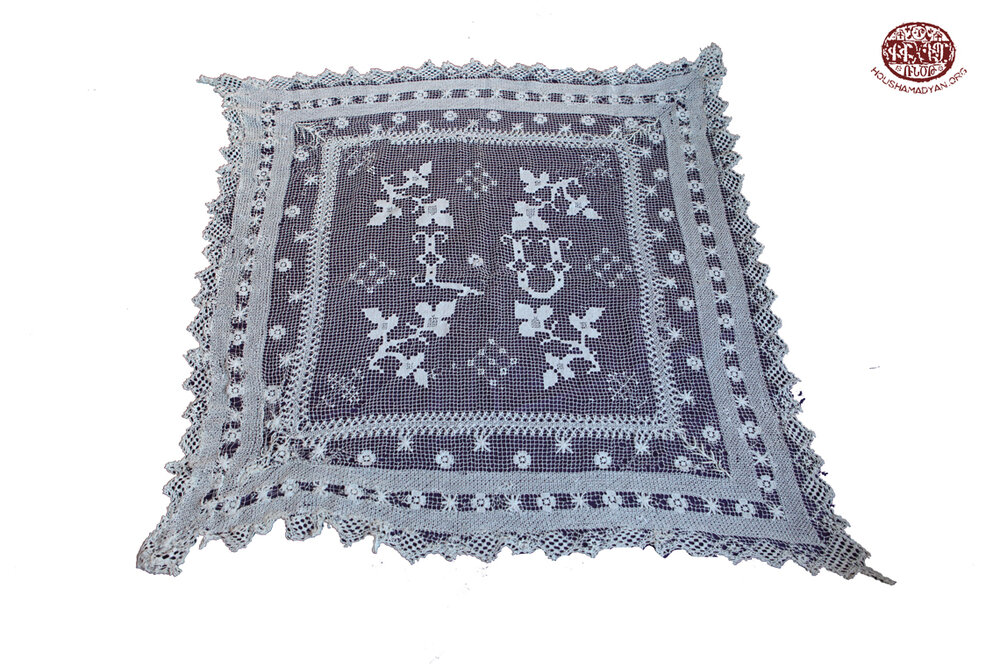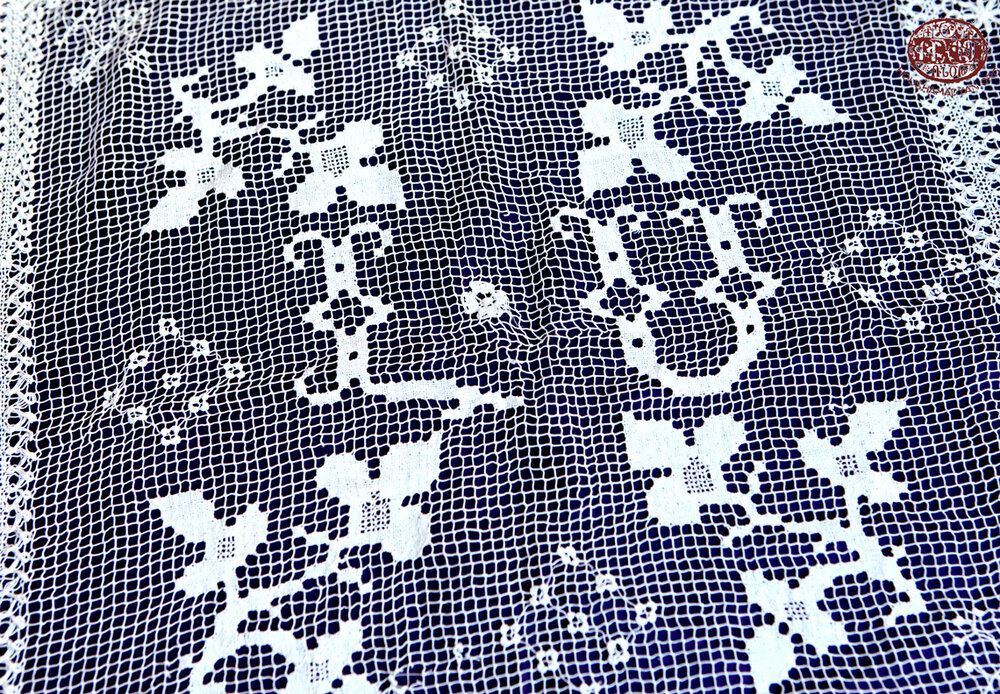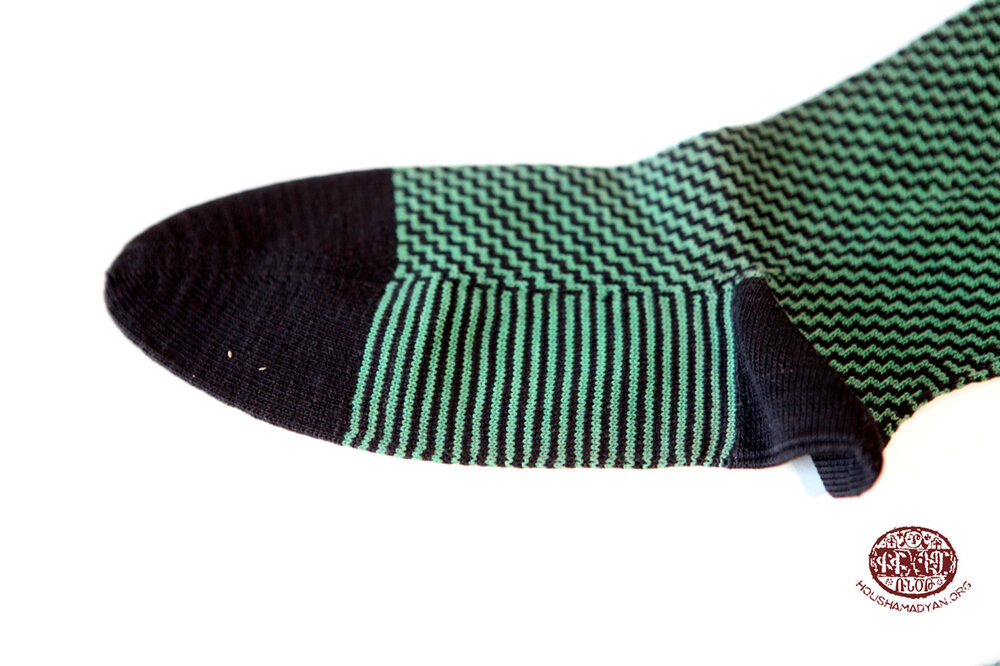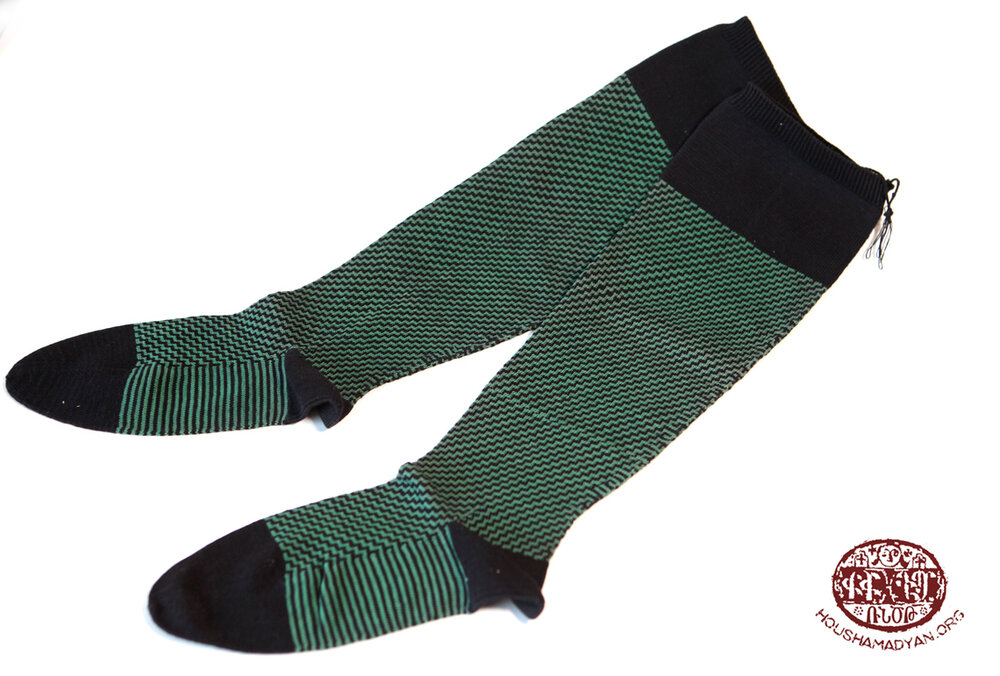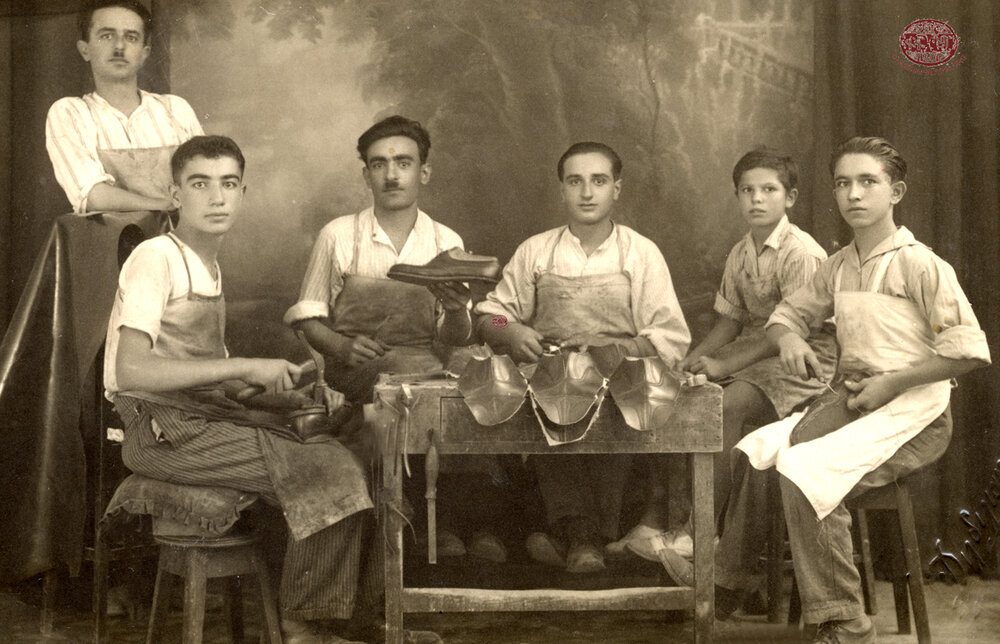Lucy Shangayan-Hovagimian Collection – Athens
Translator: Simon Beugekian, 28/09/22 (Last modified 28/09/22)
The memory objects and materials presented on this page were collected and catalogued during Houshamadyan’s workshops in Athens on April 1st and 2nd, 2022.
This page was prepared collaboratively with the “Armenika” periodical of Athens and the Athens chapter of the Hamazkayin Cultural Association. Houshamadyan’s workshops were made possible thanks to the support of EVZ Foundation, Germany.
The Sdepanian Family (Natives of Oedemish/Ödemiş)
These materials were provided to us by Lucy Shangayan. The maternal side of Lucy’s family hailed from Oedemish (near Smyrna). Lucy’s mother’s name was Maro Hovagimian (nee Sdepanian). Maro’s father was called Takvor Sdepanian, and her mother’s name was Ermon (nee Boyadjian).
In Oedemish, Takvor Sdepanian made fezzes (caps). Takvor and Ermon had three children: Aharon (born in 1903), Makrouhi (born around 1908), and Maro (born in 1912). All three children attended the Oedemish Armenian school.
When the mass migration of Armenians and Greeks from the area if Izmir began in 1922, Takvor remained in Oedemish, while the rest of the family made their way to Greece, where their first stop was the city of Thessaloniki. They never heard from Takvor again. He was probably killed by the Turkish forces that occupied Oedemish.
After a short stay in Thessaloniki, the Sdepanian family moved to Athens. There, Aharon was a member of the editorial team of the Nor Or [New Day] newspaper (affiliated with the Armenian Revolutionary Federation (ARF)). He was not a member of the ARF, but until his death in 1973, he continued contributing editorials to the newspaper.

The Hovagimian Family (Natives of Bergama)
Lucy’s father was called Antranig Hovagimian. Antranig was born in Bergama, in 1901. His father was named Kevork, and his mother Aghavni. They had three children: Gabriel, Antranig, and Mary. Aghavni (nee Asabian) died in Bergama, after which Kevork remarried, to Lucy Spartalian, who was also a native of Bergama. Kevork and Lucy had four children: Serkouhi (born in 1910), Hovagim (born in 1912), Aghavni, and Krikor. They were all born in Bergama and attended the local Armenian school.
Kevork Hovagimian was engaged in the trade of pine nuts and dried fruits. One of his sons, Antranig Hovagimian, moved to Izmir, where he worked as a clerk for a trading house. In 1915, the Hovagimian family remained in their home. As a general rule, the Armenian population of Izmir was spared from the deportation orders.
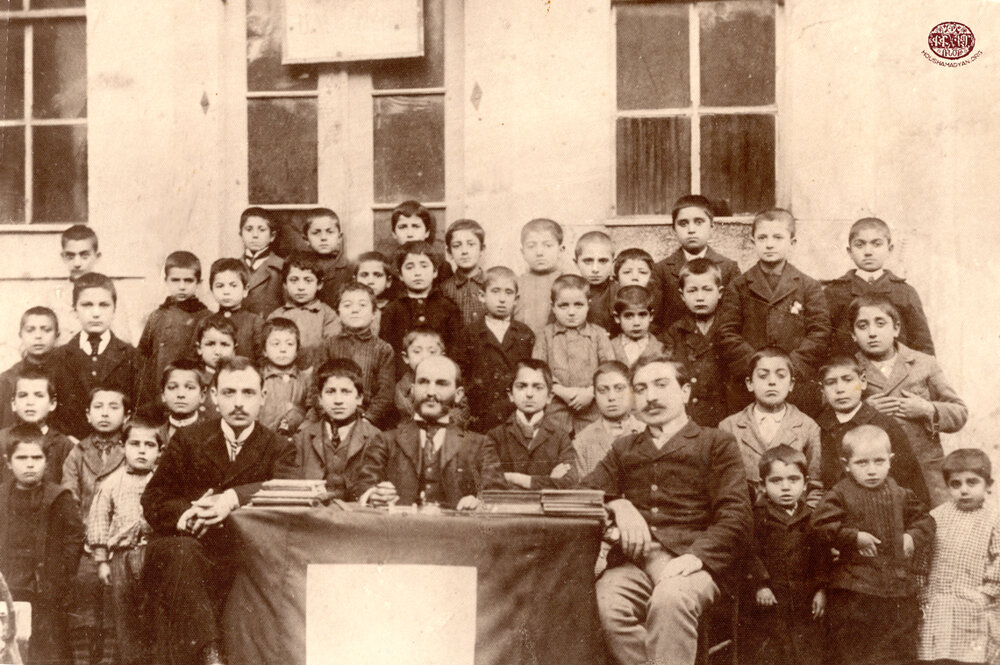

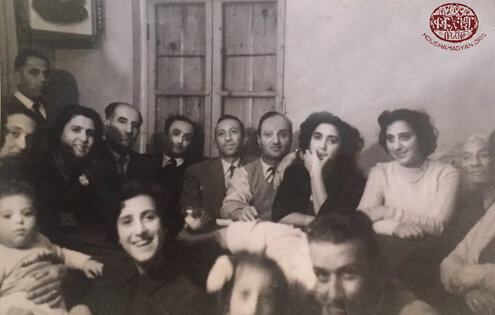
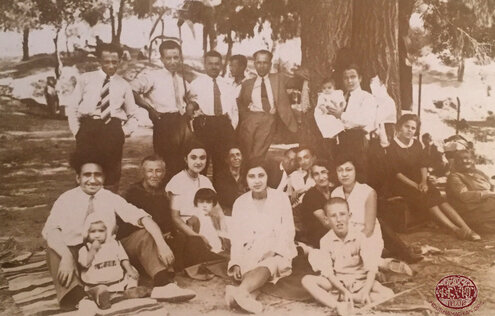
In 1920, Antranig left for the newly founded Republic of Armenia, with the intention of attending the officers’ academy. But right around that time, Armenia was Sovietized. Antranig, unable to achieve his goal, returned to Izmir.
In 1922, when in anticipation of the retreat of Greek forces, local Greeks and Armenians began fleeing to Greece, the Hovagimian family decided to make their way from Bergama to Izmir, and from there to Greece. At the eleventh hour, Kevork Hovagimian’s Turkish friends convinced him to stay in Bergama. Swayed by their arguments, Kevork communicated his decision to the family. Gabriel, his son, refused to accept this decision, causing a rift in the family. Taking Mary and Serkouhi with him, he headed for Izmir. A short time later, ten-year-old Hovagim, riding a horse alone, joined Gabriel’s group. These four, in addition to Antranig, proceeded to Greece from Izmir. Their first stop was the island of Chios, after which they moved to Crete. After spending a short time on this island, they settled down in Piraeus. There, Antranig and Gabriel practiced their father Kevork’s occupation, which was the trade of dried fruits.
Kevork, Lucy, Aghavni, and Krikor remained behind in Bergama. Those of the family who fled to Greece never discovered the fate that befell their loved ones who had stayed. In the 1970s, Hovagim visited Bergama, hoping to find a trace of his family. He found the family home, which was still inscribed with the name Guvurk (Kevork). He also found a childhood playmate of his – Ibrahim, the neighbor’s son. The two remembered each other. Hovagim wished to meet with Ibrahim, hoping to inquire into the fate of his family. But Ibrahim refused to allow Hovagim to speak to his father. Hovagim returned to Greece without having discovered his family’s fate.
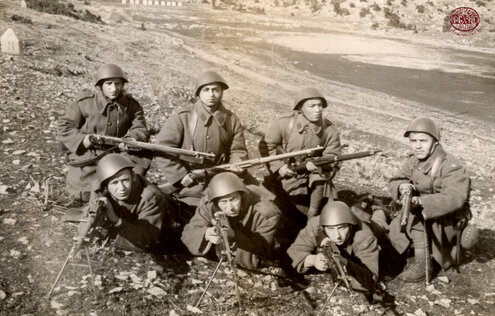
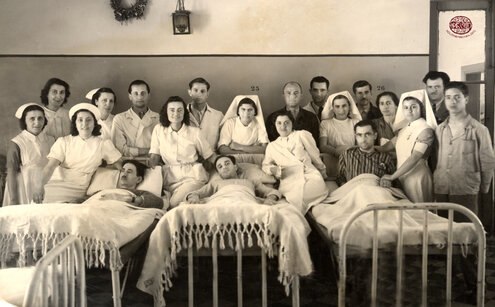
Antranig Hovagimian married Maro Sdepanian, in 1945, in Athens. They had two children, Takvor and Lucy (later Shangayan).
Gabriel Hovagimian married Yeghis, who was born in Smyrna. They had two children, Kevork and Serko. Gabriel died at a young age. In 1946-1947, his family repatriated to Soviet Armenia.
Mary Hovagimian married Mgrdich Krikorian, who was born in Bergama. They had three children: Berdj, Shake, and Aghavni.
Hovagim Hovagimian married Antonia Lorani, a Greek woman. They had two children, Lousin and Gabriel.
Serkouhi married Hagop Gemdjian. They had one child, Yeran.

